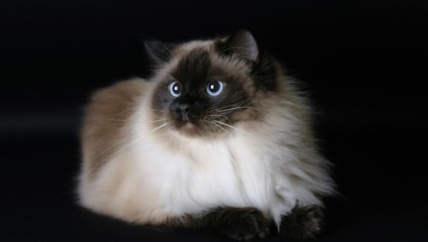How to make my ragdoll happy

Search site
Contact
E-mail: myhappyragdoll@gmail.com
History and Origin

In the 1960s a regular non-pedigreed white domestic longhaired cat named Josephine, who had produced several litters of typical cats, was injured in an accident involving a car and taken to a laboratory at the University of California. Josephine was of a Persian/Angora type, sired by several unknown male Birman or Burmese-like cats, one of which had the Siamese point coloration. After she recovered, her next litter produced exceptionally friendly kittens, which Baker claimed, was a result of a secret government genetic experiment on Josephine(a claim rejected by genetics experts). When the subsequent litter produced more of the same, Mrs. Ann Baker (an established cat breeder) purchased several kittens from the owner, who lived behind her, and believing she had something special, set out to create what is now known as the Ragdoll. The breed was selectively bred over many years for desirable traits, such as large size, gentle demeanor, and a tendency to go limp when picked up, as well as the striking pointed coloration. Out of those early litters came Blackie, an all black Burmese-like male and Daddy Warbucks, a seal point with white feet. Daddy Warbucks sired the founding bi-color female Fugianna, and Blackie sired Buckwheat, a dark brown/black Burmese-like female. Both Fugianna and Buckwheat were daughters of Josephine. All Ragdolls are descended from Baker's cats through matings of Daddy Warbucks to Fugianna and Buckwheat.
Baker, in an unusual move, spurned traditional cat breeding associations. She trademarked the name "Ragdoll," set up her own registry—International Ragdoll Cat Association (IRCA)—and enforced stringent standards on anyone who wanted to breed or sell cats under that name. The Ragdolls were also not allowed to be registered in other breed associations. In 1975, a group led by Denny Dayton broke rank with IRCA with the aim of gaining mainstream recognition for the Ragdoll. This group eventually developed the Ragdoll standard currently accepted by major cat registries.
In 1994, a second group decided to leave the IRCA and form their own group due to increasingly strict breeding restrictions. This group later established the Ragamuffin breed. Because Baker owned the rights to the name "Ragdoll", no offshoot groups could call their cats Ragdolls until the trademark on "Ragdoll" was not renewed in 2005.
Breed description

Temperament
The defining characteristic of the original Ragdoll is its docile temperament and tendency to go limp when picked up, thought to be due to a genetic mutation or passed down from the Persian and Birman breed. This has led to the myth that Ragdolls are pain-resistant. Some breeders in Britain have tried to breed away from the limpness due to concerns that extreme docility "might not be in the best interests of the cat." Still, they are generally considered gentle and laid back animals.
Physical characteristics
The Ragdoll has a sturdy body with a large frame and proportionate legs. A full grown female weighs 8-15 lbs while males are substantially larger, ranging from 12 to 20 lbs. The genes for point coloration is also responsible for the blue eyes of the Ragdoll. More intense shades of blue is favored in the show ring. While the breed has a plush coat, they consist mainly of long guard hair and the lack of a dense undercoat results in, according to the Cat Fanciers' Association, "reduced shedding and matting".
Ragdolls come in 6 different colors - seal, chocolate, flame, and the corresponding "dilutes" blue, lilac and cream. There are three different patterns:
* Pointed - One color darkening at the extremities (nose, ears, tail and paws)
* Mitted - Same as pointed, but with white paws and tummy. With or without a blaze (a white line on the face),
* Bicolor — White legs, white inverted 'V' on the face, white tummy and often white patches on the back.
© 2009 All rights reserved.